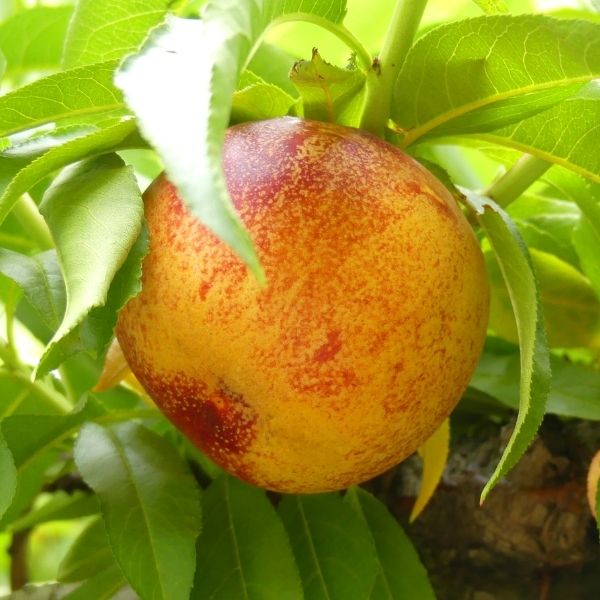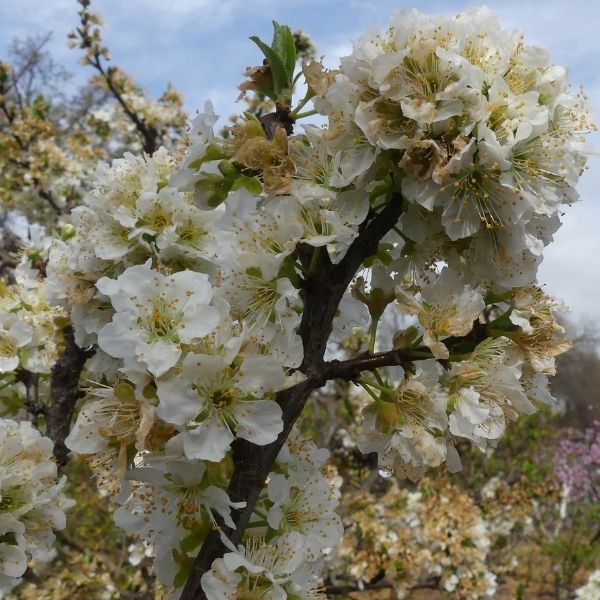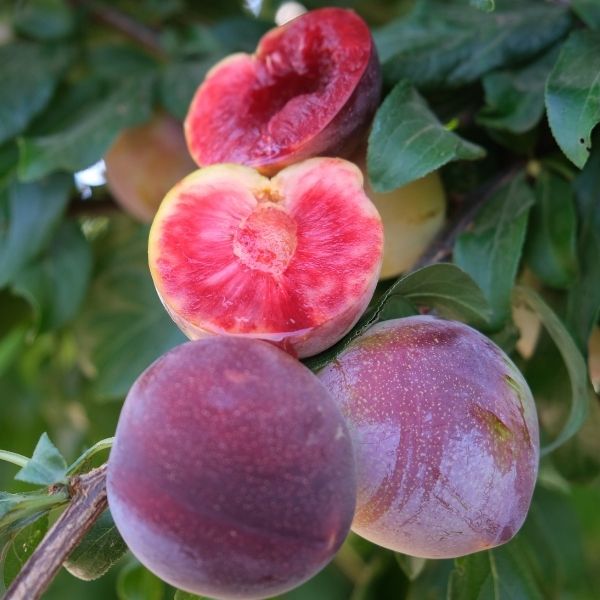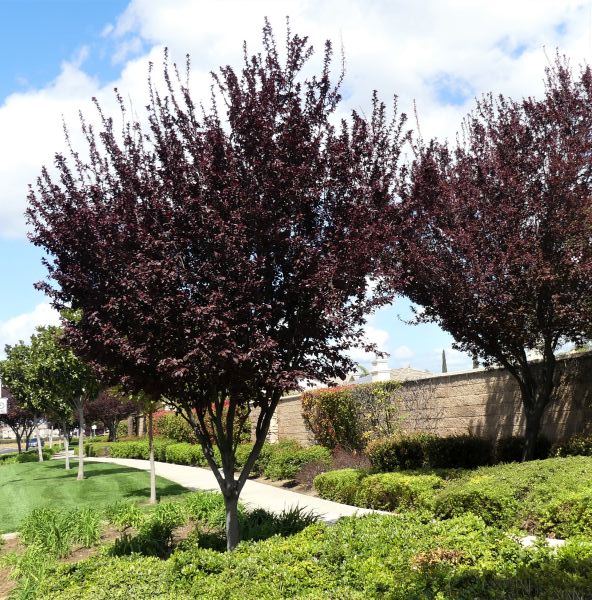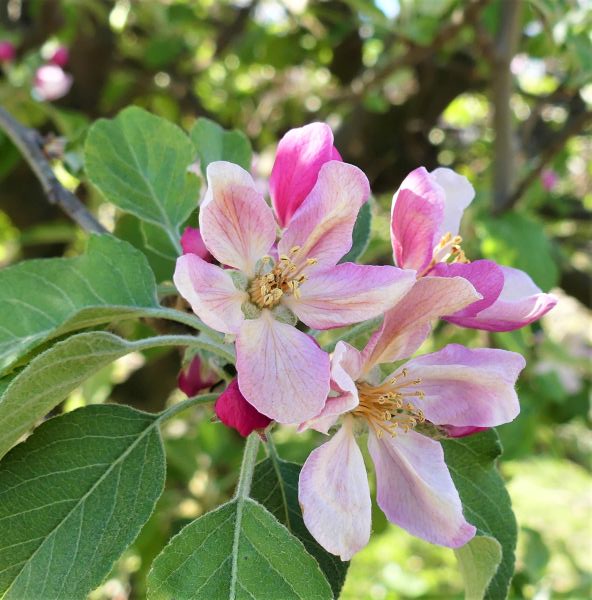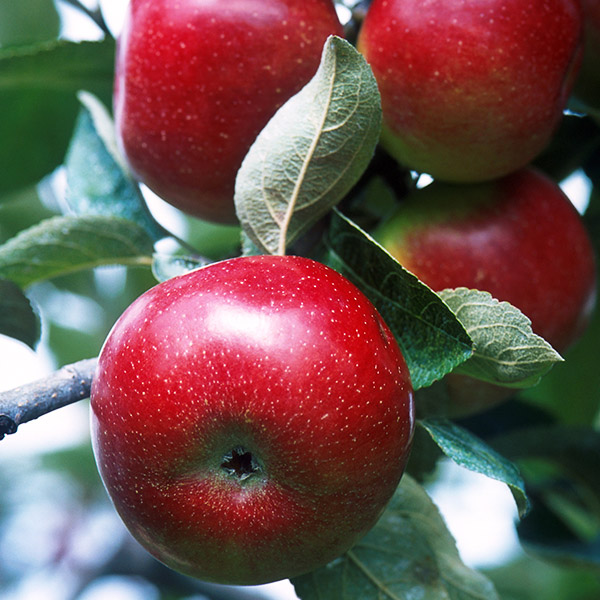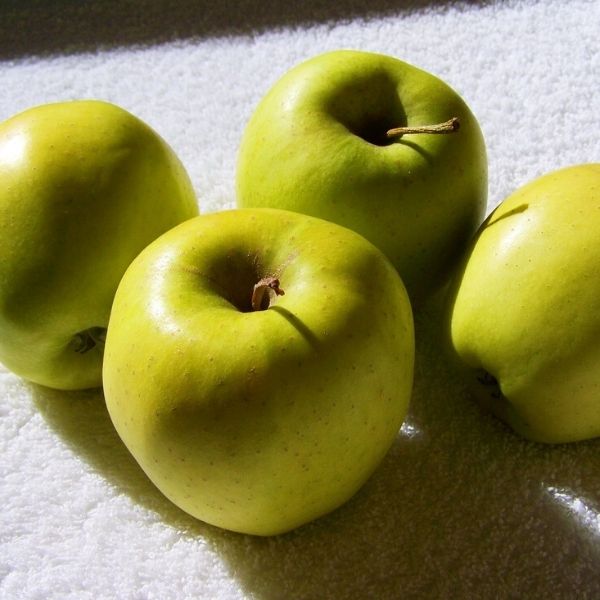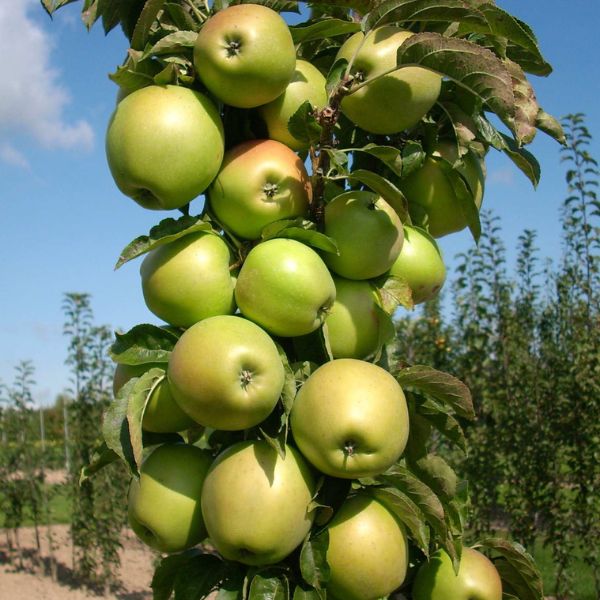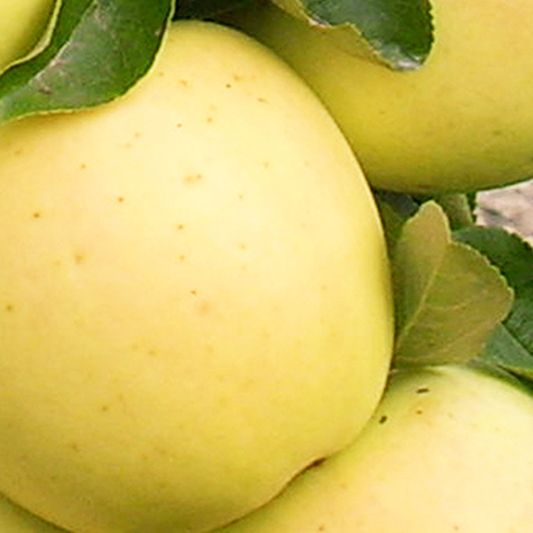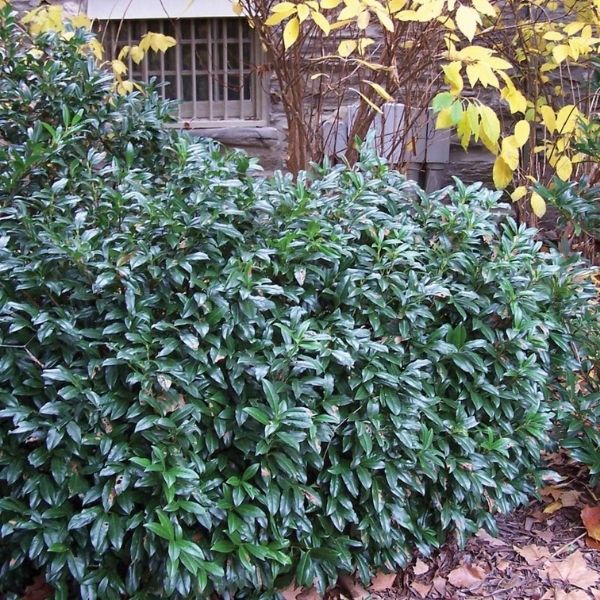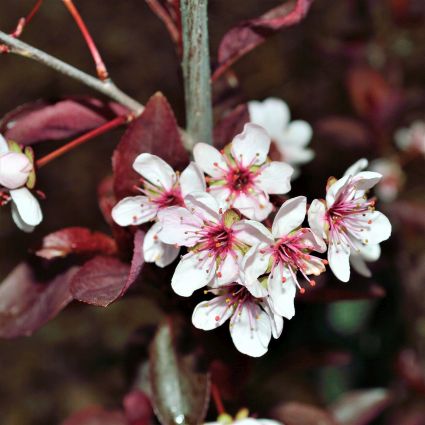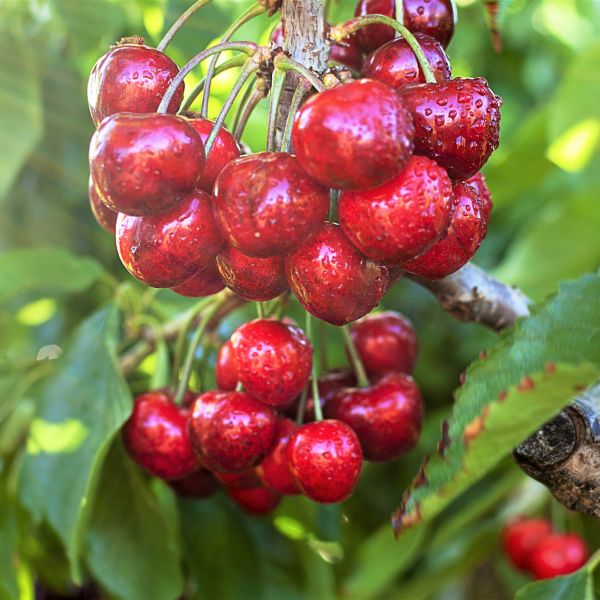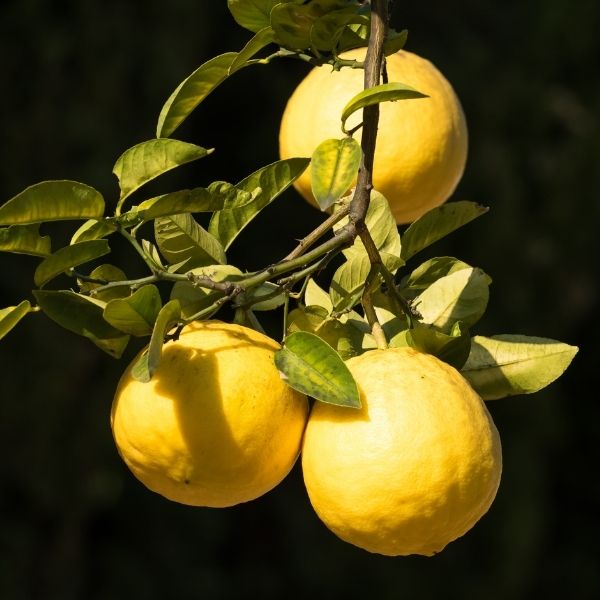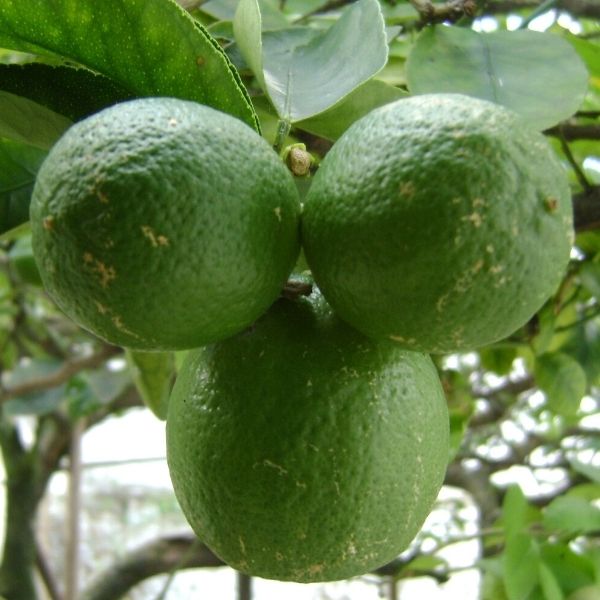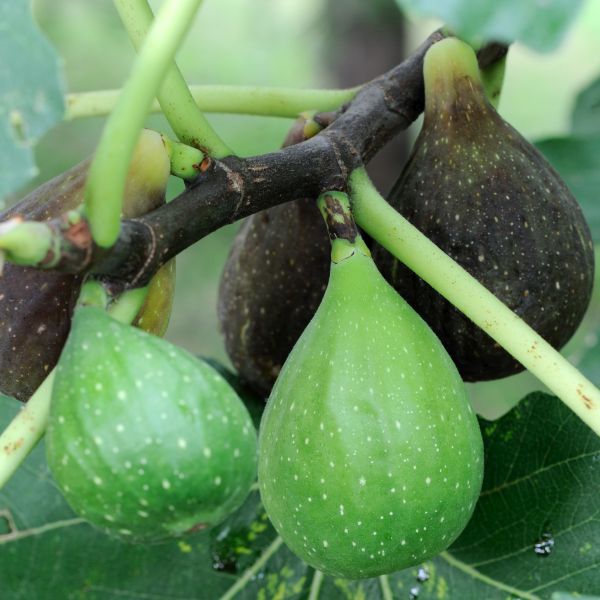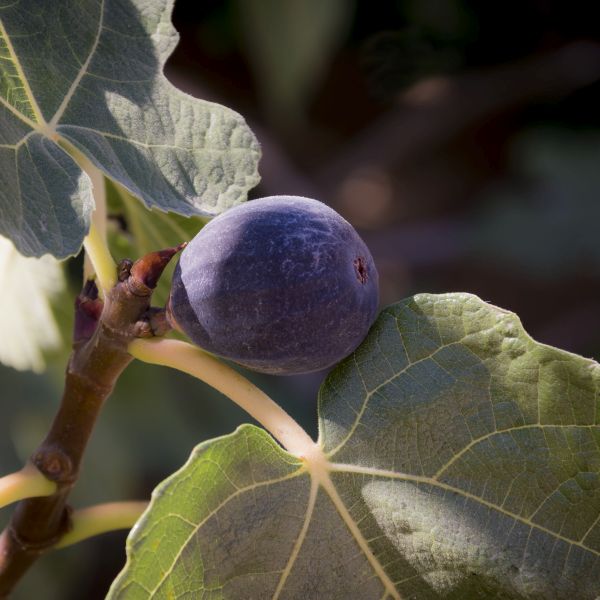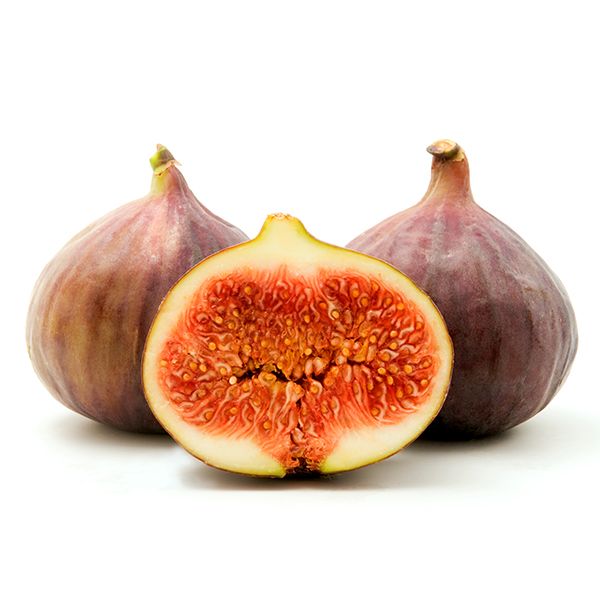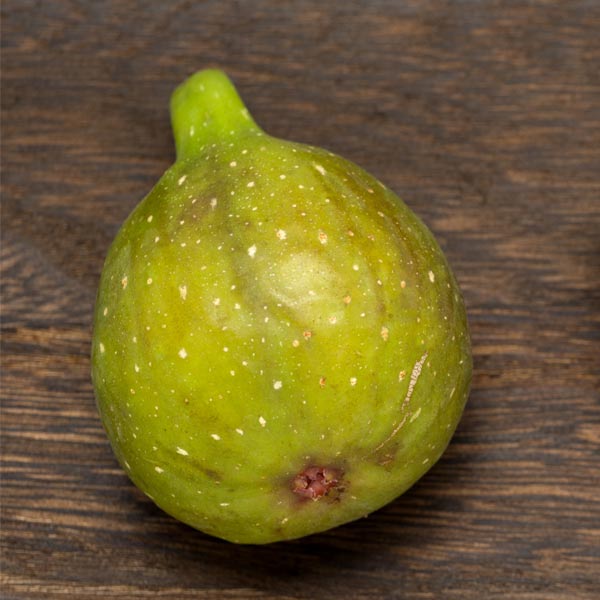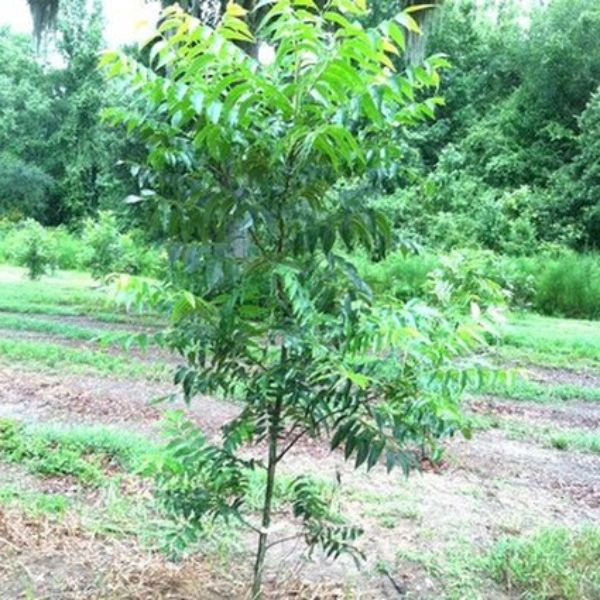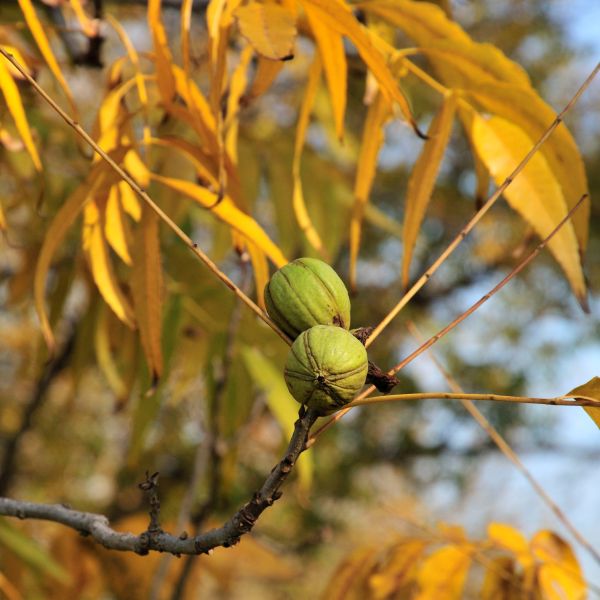Red Diamond Nectarine Tree
Prunus persica var. nucipersica 'Red Diamond'
7 reviews
Red Diamond Nectarine Tree
Prunus persica var. nucipersica 'Red Diamond'
7 reviews
- Produces delicious and juicy nectarines
- Highly productive fruit tree
- Resistant to common diseases and pests
- Ships in 3 to 7 days
- Free Shipping Over $150
- Plant Arrival Guarantee
- In Stock
$115.00
$126.5
10% Off
2.5 Gallon 4-5 Feet
Why Red Diamond Nectarine Tree?
The Red Diamond Nectarine Tree (Prunus persica var. nucipersica 'Red Diamond') is a popular fruit tree known for its vibrant red fruit. It is a type of nectarine tree, which is a variety of peach tree. The Red Diamond variety produces large, juicy, and flavorful nectarines that are perfect for eating fresh or for use in various culinary creations. It is a great addition to any home garden or orchard.
People who loved this plant also bought
Sunlight
Red Diamond Nectarine Tree requires full sun exposure.
Watering
The watering requirement for a Red Diamond Nectarine Tree is generally about 1 inch of water per week, especially during hot and dry periods. However, it is important to adjust watering based on rainfall, soil moisture levels, and the tree's specific needs
Fertilizing
The precise fertilizer requirements of a Red Diamond Nectarine Tree can vary depending on factors such as soil quality and age of the tree. Generally, a balanced fertilizer with a ratio of nitrogen, phosphorus, and potassium (NPK) of 10-10-10 or 14-14-14 i
Red Diamond Nectarine Tree (Prunus persica var. nucipersica 'Red Diamond')
The Red Diamond Nectarine Tree, scientifically known as Prunus persica var. nucipersica 'Red Diamond', is a deciduous fruit tree prized for its delicious and visually appealing fruit. This cultivar is well-regarded for its vibrant red skin and juicy, aromatic flesh.
Key Features:
- Fruit: The Red Diamond nectarine is renowned for its large, round fruit with a firm yet juicy texture. The fruit has a striking red color and a sweet, tangy flavor. It ripens during the mid-summer months.
- Tree: This nectarine tree has an attractive growth habit, reaching a height of about 10-12 feet and a spread of 8-10 feet. It features glossy dark green foliage that creates an appealing backdrop for the colorful fruit. The tree blooms with delicate pink flowers in springtime, adding a beautiful touch to any garden or orchard.
- Pollination: The Red Diamond Nectarine Tree is self-fertile, meaning it does not require a separate pollinator tree to produce fruit. However, planting it near other peach or nectarine varieties can enhance cross-pollination and potentially increase fruit set and yield.
- Care: This nectarine tree thrives in full sun and well-drained soil. It requires regular watering to establish a strong root system. Pruning is recommended during the dormant season to maintain a healthy structure and encourage future fruit production.
- Uses: The Red Diamond Nectarine Tree's fruits are excellent for fresh eating, canning, baking, and making preserves. The tree can also be used as an ornamental centerpiece in landscapes, due to its attractive foliage and stunning blossoms.
With its delectable fruit and appealing aesthetics, the Red Diamond Nectarine Tree is a fantastic addition to any fruit garden or landscape. Enjoy the abundance of juicy, red nectarines that this tree provides while adding beauty and interest to your outdoor space.
Plant Information:
| Botanical Name: | Prunus persica var. nucipersica 'Red Diamond' |
| USDA Zones: | 6-9 |
| Water: | Medium |
| Exposure: | Full Sun |
| Soil Needs: | Well Drained Soil |
| Mature Height: | 12 - 15 feet |
| Mature Spread: | 10 - 12 feet |





Pollination Info
Red Diamond Nectarine Tree Pollination Information
The Red Diamond Nectarine Tree (Prunus persica var. nucipersica 'Red Diamond') is a self-fertile fruit tree, which means it is capable of setting fruit on its own. However, cross-pollination can improve fruit set and yield. Here are some important details regarding its pollination:
Flower Type: The Red Diamond Nectarine Tree produces beautiful, showy flowers that are pink in color. These flowers are perfect, meaning they contain both male and female reproductive parts within the same flower.
Pollination Method: The Red Diamond Nectarine Tree relies on insect pollination, primarily through bees. Bees are attracted to the flowers' nectar and carry pollen from the male parts (anthers) to the female part (stigma), enabling fertilization and fruit development.
Pollination Period: The flowering period of the Red Diamond Nectarine Tree typically occurs in early to mid-spring, usually around March to April. It is crucial to have compatible pollinators available during this time.
Pollinator: While the Red Diamond Nectarine Tree is self-fertile, planting another nectarine variety nearby that blooms around the same time can increase fruit set and yield. Good pollinator varieties for the Red Diamond Nectarine Tree include other nectarine cultivars such as Honey Blaze, Sunglo, or Arctic Jay.
Planting Recommendations: It is recommended to plant the pollinator tree within 50 feet (15 meters) of the Red Diamond Nectarine Tree to allow for effective cross-pollination. Bees and other pollinators need to easily access both trees to carry the pollen.
Important Note: Even if the Red Diamond Nectarine Tree is self-fertile, factors such as adverse weather conditions, lack of pollinators, or poor health can still affect fruit set. Providing a compatible pollinator tree is a reliable way to increase the chances of successful pollination and optimize fruit production.
Remember to regularly inspect the Red Diamond Nectarine Tree during the blooming period for pollination success. Adequate pollination is essential for a bountiful harvest of delicious nectarines!
FAQ
Red Diamond Nectarine Tree FAQs
1. What is the Red Diamond Nectarine Tree?
The Red Diamond Nectarine Tree, scientifically known as Prunus persica var. nucipersica 'Red Diamond', is a deciduous fruit tree that produces delicious nectarines. It is a popular cultivar known for its large, juicy, and flavorful fruits.
2. How tall does the Red Diamond Nectarine Tree grow?
The Red Diamond Nectarine Tree typically reaches a height of around 12 to 15 feet (3.7 to 4.6 meters) when fully mature. However, with proper pruning and maintenance, it can be kept at a smaller size for easier harvesting.
3. What is the best planting location for the Red Diamond Nectarine Tree?
The Red Diamond Nectarine Tree thrives in a location that receives full sunlight for at least 6 to 8 hours a day. It prefers well-draining soil with a slightly acidic pH level (between 6.0 and 6.5). It is important to choose a spot that is protected from strong winds, as they can damage the tree and its fruits.
4. When is the best time to plant the Red Diamond Nectarine Tree?
The best time to plant the Red Diamond Nectarine Tree is during the late winter or early spring, before the tree starts to bloom. This allows the tree to establish its roots before the hot summer months. Avoid planting during frosty periods or extreme heatwaves.
5. How much water does the Red Diamond Nectarine Tree need?
Young Red Diamond Nectarine Trees should be watered deeply once or twice a week, depending on the weather and soil conditions. As the tree matures, it becomes more drought-tolerant, but it is still important to provide regular watering during dry spells to maintain optimal fruit production.
6. Does the Red Diamond Nectarine Tree require pruning?
Yes, regular pruning is necessary for the Red Diamond Nectarine Tree. It should be pruned during the dormant season (late winter or early spring) to remove any dead or diseased branches, improve airflow within the canopy, and maintain a desirable shape. It is also recommended to thin out excess fruit to promote larger and healthier nectarines.
7. How long does it take for the Red Diamond Nectarine Tree to bear fruit?
The Red Diamond Nectarine Tree usually begins to bear fruit 2 to 4 years after planting, depending on various factors such as growing conditions and proper care. However, the tree can occasionally take up to 5 years to produce a full harvest.
8. How do I protect the Red Diamond Nectarine Tree from pests and diseases?
Regular inspection of the tree for any signs of pests or diseases is important. You can use organic insecticides or fungicides if necessary, but it is recommended to consult with a local gardening expert or cooperative extension office for the best treatment options specific to your region. Proper sanitation practices, such as removing fallen leaves and fruits, can also help prevent the spread of diseases.
9. When is the harvest season for Red Diamond Nectarines?
The harvest season for Red Diamond Nectarines generally starts in late spring to early summer, depending on the climate. The fruits are ready for picking when they have reached their mature size, developed their characteristic red color, and can be easily detached from the tree with a gentle twist.
10. Can the Red Diamond Nectarine Tree be grown in containers?
Yes, the Red Diamond Nectarine Tree can be grown in containers, but it is essential to select a large enough container and provide proper care. Choose a pot with good drainage holes and use a well-draining potting mix. Regular watering, fertilizing, and pruning are crucial to ensure the tree's health and productivity in a container environment.
Planting & Care
Planting and Care for Red Diamond Nectarine Tree
Planting:
- Choose a location with full sun exposure and well-draining soil.
- Dig a hole that is twice as wide and just as deep as the tree's root ball.
- Loosen the roots gently before planting, and remove any damaged or tangled roots.
- Place the tree in the hole, ensuring that the bud union (swollen area on the lower trunk) is level with the ground. Backfill the hole with soil, ensuring there are no air pockets.
- Water the newly planted tree thoroughly.
- Watering: Keep the soil consistently moist but not waterlogged. Water deeply around the base of the tree, particularly during hot, dry spells.
- Fertilizing: Apply a balanced slow-release fertilizer in early spring and again in early summer according to the package directions.
- Pruning: Prune the tree in late winter or early spring to remove dead, damaged, or crossing branches. Thin out overcrowded branches to improve air circulation and sun exposure. Prune to maintain an open center shape.
- Thinning: Thin the fruit after it sets to prevent overcrowding and allow the remaining fruit to develop larger and more flavorful.
- Pest and Disease Control: Regularly inspect the tree for signs of pests or diseases, such as aphids, peach leaf curl, or brown rot. Apply appropriate insecticides or fungicides if necessary.
- Harvesting: Red Diamond nectarines are ready to harvest when their skin turns deep red. Gently twist the fruit to harvest.
Care:
By following these planting and care instructions, you can enjoy a healthy and productive Red Diamond Nectarine Tree that produces delicious nectarines.
Check Out These Verified Customer Reviews:
Customer Reviews
4.7 out of 5 based on 7 reviews
Thank you! Your review has been submitted.
The Red Diamond Nectarine Tree arrived in perfect condition and was a beautiful addition to my garden. The fruit quality is exceptional, and I am already seeing great results from this tree.
Overall, a great experience purchasing from this website.
Excellent customer service, helpful staff.
Item has been added to your cart.



